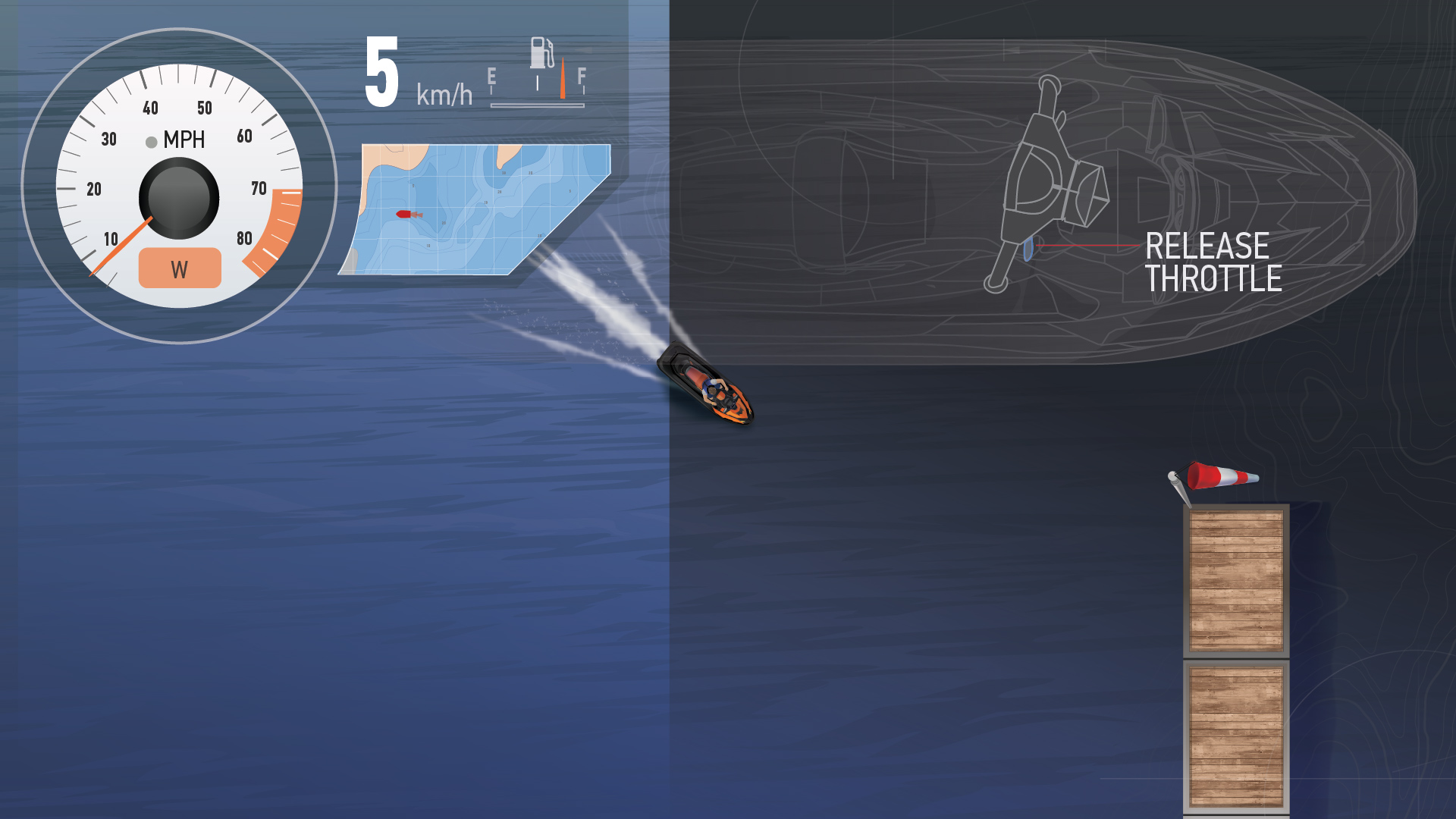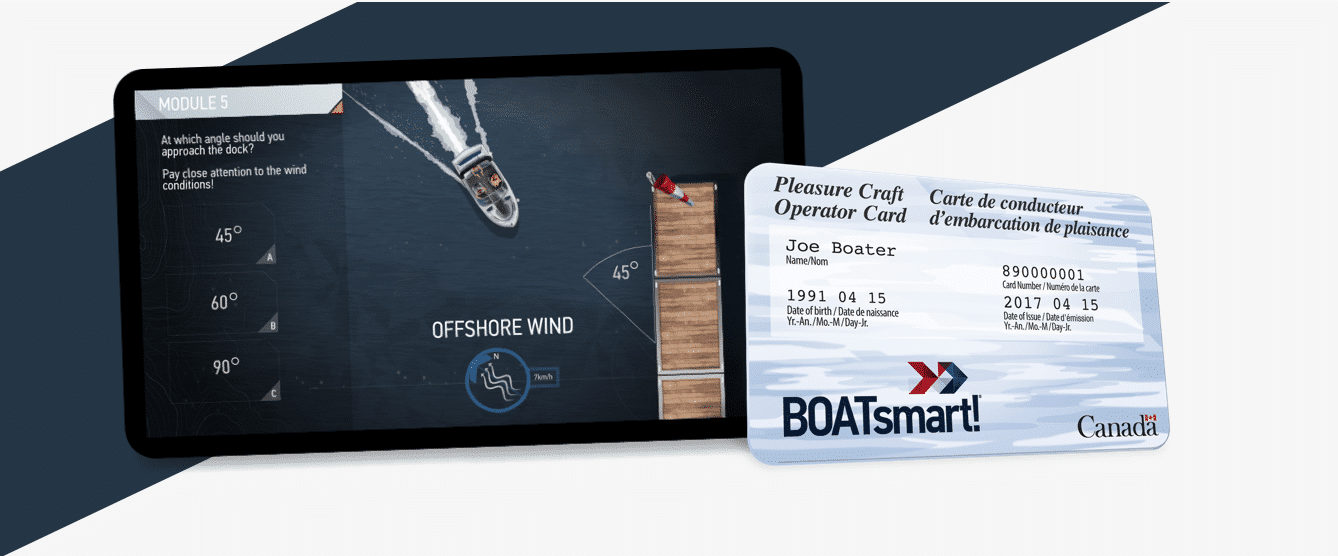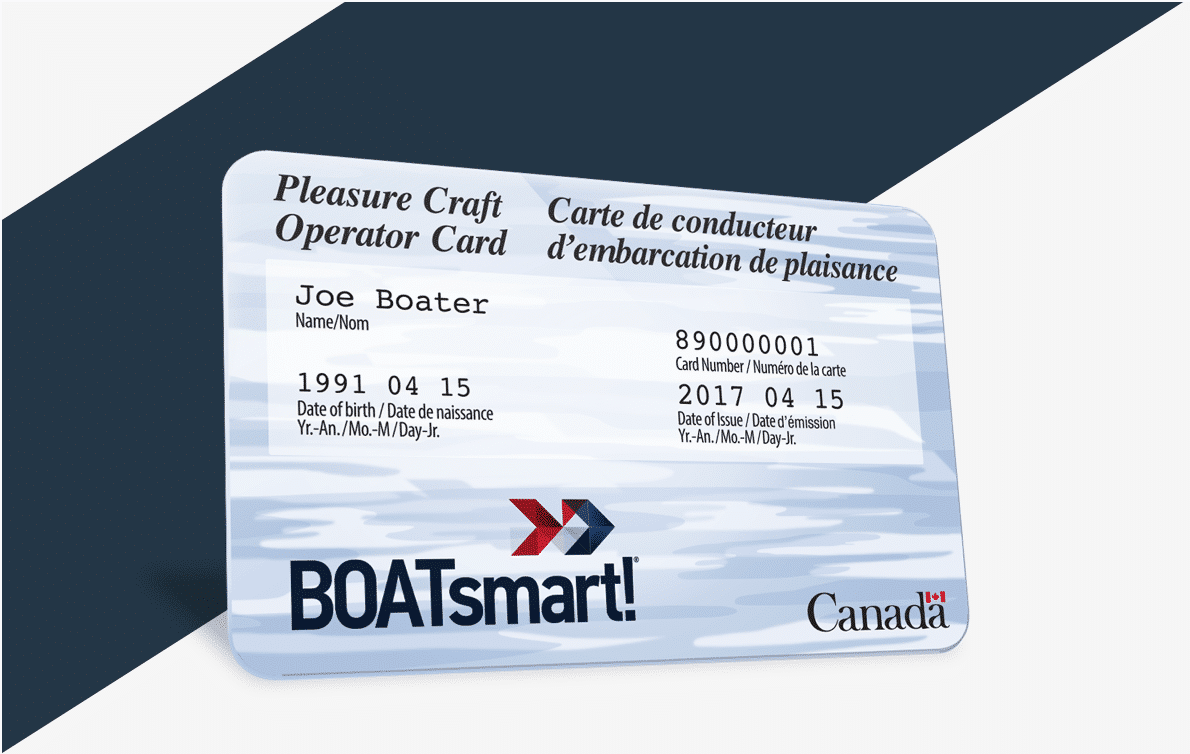BOATsmart! Canada
Knowledge Base
Module 04 - Safe Boat Operation
Steering and Stopping Your PWC
The power of high-pressure water being forced through the PWCs jet-propulsion system, and out through the jet-thrust nozzle, is what gives a PWC steering control.
The jet-thrust nozzle, also called a ‘steering nozzle’, is controlled by the handlebars, and can be turned from left to right. This turns the high-pressure water from the jet-thrust nozzle in a new direction, and causes the PWC to turn.
Remember, If you’re operating an older PWC:
You will need to apply throttle in order to steer. On older machines, when the throttle lever is released to idle position, less water is forced through the jet-thrust nozzle, which causes less steering and directional control. If the engine is shut off, all directional control is lost.
Newer machines will be equipped with assisted steering technology. When throttle is released and the handlebars are turned all the way to the left or right, the assisted steering will kick in, and allow the operator to continue steering the machine.

Stopping:
You can stop a PWC by releasing the throttle lever, pressing the stop button, or disconnecting the safety lanyard. Never use a PWCs reverse thrust to stop. You or your passenger(s) (guests) could be unexpectedly thrown towards the handlebars or off of the machine.
PWCs require a minimum of 40 m - 70 m to come to a complete stop from full-throttle. The exact stopping distance required will depend on your size and type of PWC, as well as wind and water conditions.
Remember: Become familiar with the how to stop your PWC by practicing in a safe, controlled area. Always leave lots of distance between yourself and other craft.


Get your Official Canadian
Boating License
The Official Transport Canada Boating Course, Test & License.
Get your Official Canadian
Boating License
The Official Transport Canada Boating
Course, Test & License.



